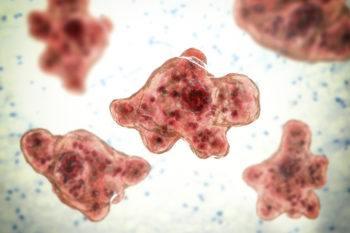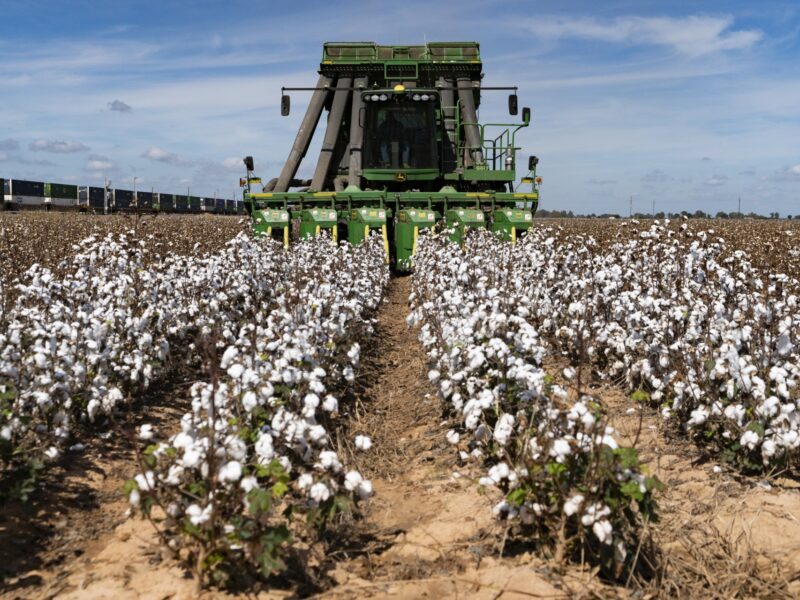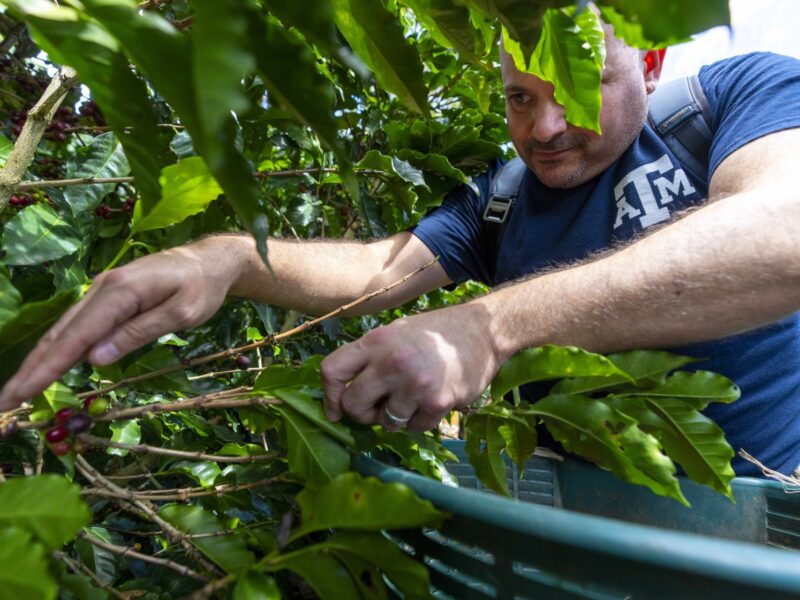Deadly Amoeba In Texas Water Supply Raises Concerns

The recent discovery of a brain-eating amoeba in the water supply of Lake Jackson, Texas, the subsequent issuance of a boil order for that town, and a declaration of disaster for Brazoria County by Gov. Greg Abbott has raised concerns about the state’s water quality.
Texas A&M AgriLife experts say that while dangerous substances and organisms can occur in the environment, the overall quality of the state’s water supply is good, and that drinking water treatment plants in the U.S. routinely produce some of the safest drinking water in the world. However, these systems are not perfect, and contaminants sometimes make it into the water distribution system.
Amoeba And Other Concerns
“The Naegleria fowleri amoeba is a natural part of many freshwater ecosystems,” said Terry Gentry Texas A&M AgriLife Research professor of soil and aquatic microbiology in the College of Agriculture and Life Sciences. “There are generally a handful of human infections from the amoeba each year in the U.S., and sadly these are nearly always fatal.”
Gentry said transmission most typically occurs as a result of recreation in freshwater, but there are also cases where infection has occurred through contaminated tap water. But infection from Nagleria fowleri only occurs when the amoeba moves into the nasal cavity.
“Generally speaking, both groundwater and surface water quality in Texas are good and, when used for drinking water, are readily treated to meet Texas Public Drinking Water Standards,” said Lucas Gregory, assistant director of the Texas Water Resources Institute.
TWRI helps solve state water issues by providing science-based, community-supported solutions as a unit of AgriLife Research, the Texas A&M AgriLife Extension Service and the College of Agriculture and Life Sciences of the Texas A&M University System.
“Water in the environment naturally contains some substances that are undesirable and may be present in concentrations that make it unsuitable for safe human consumption,” he said.
And, while modern drinking water treatment processes and technologies do an excellent job of removing or neutralizing contaminants, Gregory said, changes in source water quality or a failure in one or more components in a treatment system can cause treatment effectiveness issues.
“Pollution events also pose challenges for water treatment plants, but source water quality monitoring provides critical information to plant operators allowing them to appropriately treat water or issue consumption notices to the public when necessary,” he said.
This is especially true during and after catastrophic events such as floods when source water quality can drastically change, mechanical treatment systems can sustain damage and contamination may occur within the distribution system, Gregory said.
Stakeholder Involvement
TWRI works to improve environmental water quality by engaging local stakeholders in the development of a watershed protection plan. It helps identify contamination sources and work to develop management and restoration strategies to mitigate adverse effects from these sources.
“Engaging watershed stakeholders during plan development is critical,” he said. “It ensures stakeholder concerns are identified and being addressed, needed technical and financial resources are identified, and solutions to manage identified problems are chosen by those stakeholders.”
TWRI works with AgriLife Extension county agents to deliver its water programs to stakeholders. Anyone interested in learning of efforts to protect water resources are underway in their area should reach out to their local AgriLife Extension county agent.
Stakeholders can also get involved in the Texas Watershed Steward, or TWS, program, which provides them the opportunity to help with planning and implementing water resource management and protection programs for their area watershed.
The TWS program is implemented through a partnership between AgriLife Extension and the Texas State Soil and Water Conservation Board, or TSSWCB. Texas Watershed Stewards learn about the nature and function of watersheds, potential impairments and strategies for watershed protection. The program is open to all watershed residents, including homeowners, business owners, agricultural producers, decision-makers, community leaders and other citizens.
“TWS provides these stakeholders with science-based, watershed education to help citizens identify and take action to address local water quality impairments,” said Michael Kuitu, AgriLife Extension program specialist and coordinator for the program.
“Active public participation in local watershed management efforts is critical in addressing local water quality problems and concerns.”
Another important aspect of managing water supply quality is land management decisions, and landowners can get insights on how to preserve and protect these resources through the Texas A&M Natural Resources Institute, or NRI.
“Among our institute’s goals is to help landowners identify ways to conserve and manage their natural resources,” said NRI director Roel Lopez. “We provide information on land use trends and opportunities such as conservation easements that will increase landowner awareness of the overarching issues related to water resources and some mutually beneficial practices for conserving those resources and maintaining their quality.”
For Texas residents who depend on household wells for their water needs, educational and water screening opportunities are offered through the Texas Well Owner Network, TWON said Joel Pigg, AgriLife Extension program coordinator for TWON.
“Private well owners are responsible for all aspects of ensuring their drinking water system is safe, including system inspection, testing and maintaining water quality, Pigg said. “They are also at greater risk than normal for exposure to compromised water quality due to flooding and other factors.”
He said private well owners can benefit from the TWON program’s half-day “Well Educated” program and one-hour “Well Informed” program. The program also provides fact sheets and other publications to help them better understand and care for their wells.
“Program participants can also bring samples of their own well water to trainings in their area to be tested for nitrates, dissolved solids and bacteria,” Pigg said.
Expanding Statewide Efforts
Helping ensure water quality is also an objective of a new statewide coordination of water research and extension efforts for Texas A&M.
A series of efforts are underway across The Texas A&M University System to improve the effectiveness of water programs in Texas and beyond. Texas A&M AgriLife will work to bring together water resource expertise across the Texas to create a collaborative network capable of preparing for and responding to the state’s water challenges.
In this comprehensive effort, AgriLife will coordinate with West Texas A&M University, Tarleton State University, Texas A&M-Commerce, Texas A&M AgriLife Center at Stephenville, Texas A&M University School of Law and the Texas A&M Engineering Experiment Station. AgriLife Research and AgriLife Extension efforts will be directed toward scientific and social investigations and statewide educational outreach.
This article by Paul Schattenberg originally appeared on AgriLife Today.





